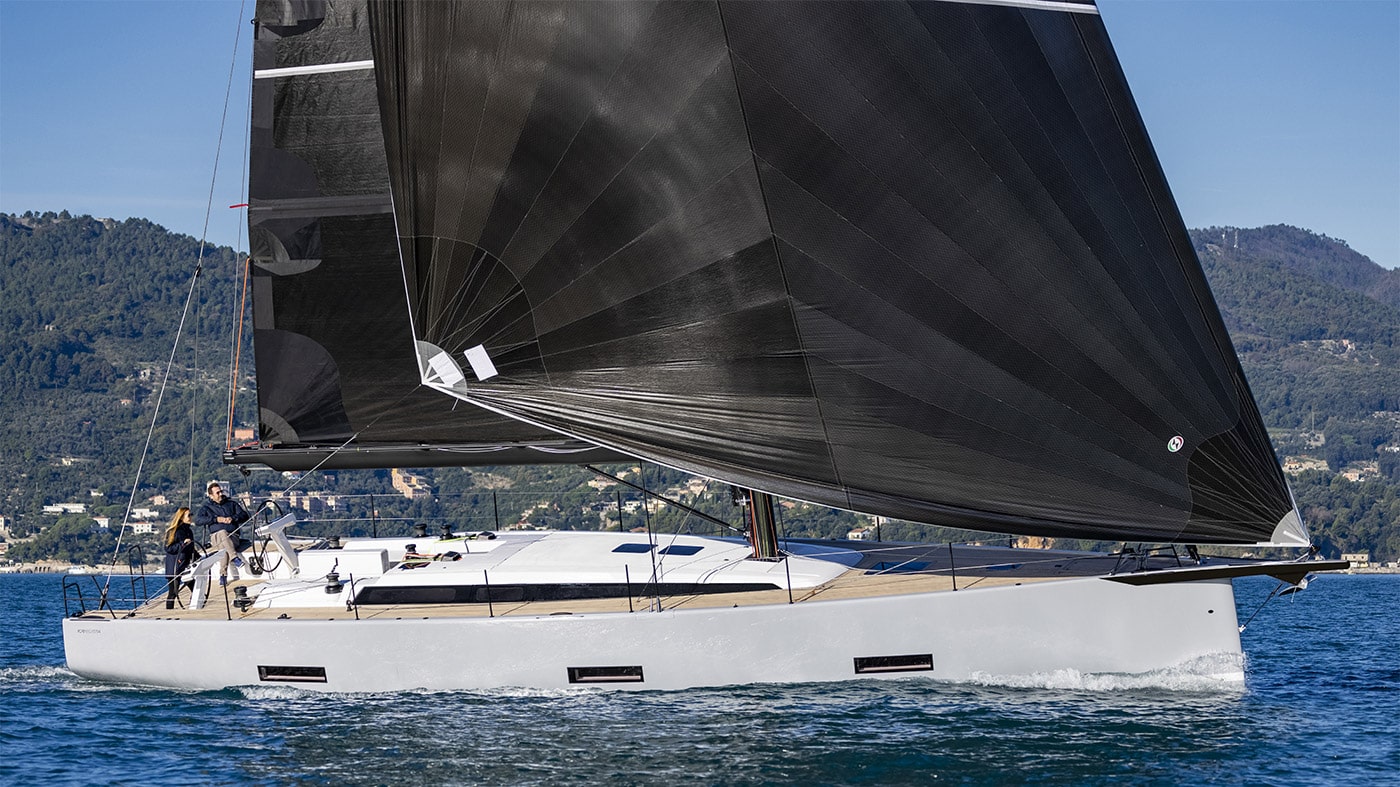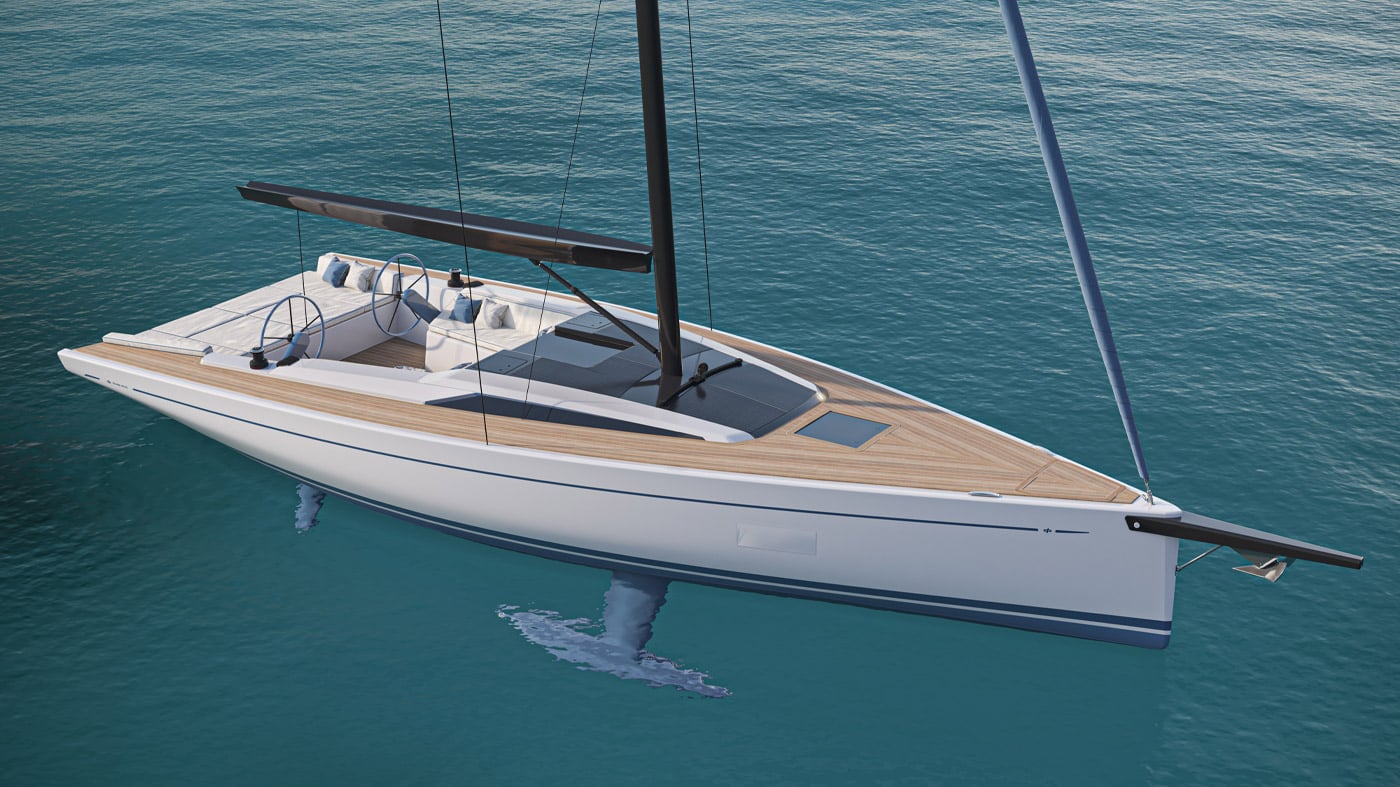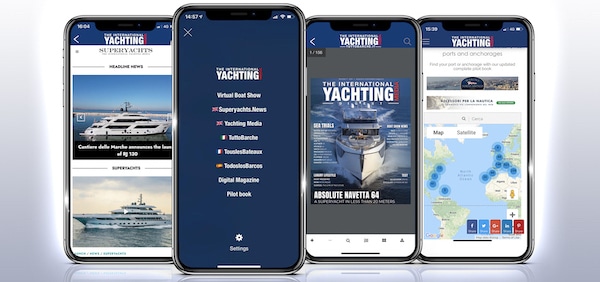Eleva Yachts is a new brand in Italian boat industry. Its first model is named “The Fifty” and is an innovative fast cruiser designed by Giovanni Ceccarelli.
There is no doubt that the pencil of Giovanni Ceccarelli is synonym with fast sailing. The famous designer has already designed many boats that have remained engraved in the memory of sailors, such as “Dimore del Garda”, the Quarter Ton racing yachts, the acclaimed series of Azuree yachts and the latest Grand Soleil 80, which we have already talked about in our magazine. Ceccarelli has even been the “Principal Designer” of two important challenges of America’s Cup: in New Zealand (2000) with Mascalzone Latino and with +39Challenge in 2007.
Eleva Yachts results from the experience of Carbon Line, one among the Italian leading brands in the production of composite materials that has already produced over 100 boats.
Eleva Yachts is a new brand with a specific mission: to build high-quality sailing boats devoted to both recreational boating and fast cruising experiences, where seaworthiness and comfort merge with the pleasure of sailing. In order to achieve these goals, the structure of every model is designed by a team of experts that use the best of contemporary technology to build high-performance boats.
More specifically, The Fifty is the first concept and the first – and smallest – boat of a series of larger boats destined to become a reference in the fast cruise segment.
Easy handling, ensured even with small crew, easy-to-use rigging and the project itself, entirely achieved in line with Class A sailing standards, give this boat all the typical qualities of a cruiser built to sail in any sea condition.
Design is clear but unmistakable and allows the boat to stand out in the arena of competitors. The fast hull will make the difference in both racing challenges and fast long-range cruises.
The concept
Ceccarelli Yacht Design Studio has taken care of different aspects: hull lines, interior and exterior design, deck layout and structures. Supported by the CFD (Computational Fluid Dynamics) system, both interior and exterior design have been created and developed starting from hull lines, specifically designed for a medium-light displacement. A real innovation in the world of sailboats is represented by the sheerline that, in addition to provide the project with great personality, allows for a high bow and a light deckhouse which immediately stops before the mast by creation one among the main hallmarks of this boat. Loof lines, designed to deflect water, confirms an extremely functional design.
Water lines
Large A-line aft sections, rather narrow near the waterline and with considerable fore volumes, suggest the idea of a stable dynamic boat, probably fast in any speed and wind conditions. The great shape holding suggests a certain easy handling and satisfaction in steering this yacht, preferably at high speed and with the use of gennaker. Hull lines have been specifically designed to exceed critical speed, both under power and when sailing. The double rudder definitively expresses the nature of this hull, designed to obtain easy handling and excellent course holding.
Deck and sail plan
The sail plan features a mast positioned amidships which provides with a well-balanced canvas distribution at all speeds. The sail plan includes a 90% fractional rig, a 104% LPG genoa, a fore stay sail and a Code 0 mounted on the boom where the gennaker, too, can be installed.
Construction
The hull is laminated with glass fibers and epoxy resin infused in three steps: the first phase consists in the infusion of external layer; the second is the vacuum gluing of the core while the third step consists in the infusion of the inner layer. The structures of the hull are, in their turn, infused with epoxy resin. Carbon is used for the reinforcements of structures, including the keel support. Bulwarks are all structural, infused with epoxy resins, glued and resined on board. Structural chainplates are all made of carbon and vacuum-laminated. The deck is entirely made of carbon and infused epoxy resins. This solution allows to lower the barycenter, reduce upper weights and make the hull-deck whole more rigid.
In order to optimize the best qualities of epoxy resin, all models are then treated in a larger oven at 80 degrees. The keel is made of high-resistance box-shaped steel with lead bulb in order to lower the gravity center ad increase stability.
Technical specifications
| Technical details | ||
| Length overall (with bowsprit) | m 16.50 | ft 54,12 |
| Hull length | m 15.24 | ft 49,99 |
| LWL – Light dspl | m 13.85 | ft 45,43 |
| Waterline width/ BMAX | m 4.86 | ft 15,94 |
| Draft – Standard | m 2.87 | ft 9,41 |
| Draft -Short keel | m 2.45 | ft 8,04 |
| Unladen displacement | kg 10500 | lbs 23100 |
| Laden displacement | kg 12900 | lbs 28380 |
| Standard Ballast | kg 3900 | lbs 8580 |
| Engine | Volvo cv 75 | Volvo hp 75 |
| SAIL PLAN | ||
| Sail area upwind | mq 154 | ft 1657.64 |
| Mainsail | mq 88 | ft 947.22 |
| Jib | mq 66 | ft 710.42 |
| Gennaker | mq 240 | ft 2583.34 |
| P | m 20.5 | ft 67.24 |
| E | m 6.8 | ft 22.30 |
| I | m 20.6 | ft 67.57 |
| J | m 6.0 | ft 19.68 |
| LPG MAX | m 6.3 | ft 20.66 |
| TANK CAPACITY | ||
| Fuel | lt 270 | gal 52,00 |
| Water | lt 510 | gal 114,4 |
| Hot water | lt 40 | gal 10,40 |
| Grey water | lt 45 | gal 11,70 |
| Black water | lt 90 | gal 23,40 |
| CE Category | A | A |
| Designer | ||
| Naval Architecture: Ceccarelli Yacht Design | ||
| Exterior and interior design: Ceccarelli Yacht Design | ||
| Engineering: Ceccarelli Yacht Design |

































